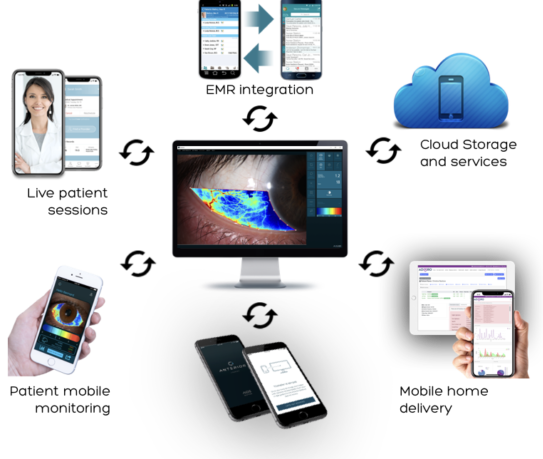The State of Technology: Karl Jeebaun
20th May 2020

We live in a world where we have all heard “there’s an app for that”. Every good idea has been digitised in one way or another, and every process has been automated. The problem is these exciting technologies are often being used in basically every other industry but medical – why? Money. It’s that simple.
The barriers to entry into the medical arena mean that most new technologies, not exclusively built for medicine, end up directed at other industries where these barriers don’t exist. Regulations, ISO, ethics, validations, clinical trials and now GDPR have made entering the medical arena with digital technology almost vocational for any tech company. Years of overhead costs (which aren’t required elsewhere) with no guarantee of adoption is the looming consequence for any tech company. AOS Anterior is a case in point. We created Anterior in 2016, but only really now in 2020 is it seeing the adoption and use it was designed for – 4 years of costs with no return. We are not an isolated case by any means, and we are fortunate in that our applications are applicable in other sectors – but for those with a single idea or product, it is a long expensive road that is littered with great technologies destined never to see the light of day.
This is true of any type of product, whether it be drugs, hardware or consumables. All have a similar journey, and rightly so. Anything used within the medical arena should be of the highest standard, validated and compliant. The net result of these obstacles, along with old internal IT infrastructures, healthcare systems often being on different networks, bits of tech essentially glued together and an understandable reluctance to alter 30-40 yr old processes all add to the barrier to adoption of technology that is there ready and waiting.
Video calling is not a new technology, neither is image transfer, data encryption, secure storage or image enhancement and analysis. All of these technologies are used every day by millions of businesses across the world without a second thought – it’s the norm.
So when the world is tested in the form of COVID-19, the medical industry is forced to react. Outwardly, it seems to be clinging on to telemedicine as the silver bullet that will solve all their problems. In some cases it is, but we have the opportunity now to really make a significant change by providing something that future proofs the industry, increases accessibility to new tech, and therefore encourages tech companies to focus more on delivering that tech where it’s needed.
When you start to think about what is needed technically to achieve a robust solution in ocular surface management, there are numerous pieces of isolated components most of which are available on the market today, but none of which are fit for purpose in properly managing ocular conditions.
To achieve our vision above, as an example, here’s a list of some of the tech required:
- Mobile app – Patient imaging with diffused light via smartphone
- Mobile app – Clinician imaging either via a slit lamp or with diffused light via smartphone
- Secure transfer, storage and management of images/reports
- Clinical app – Live video/chat sessions
- Clinical app – Objective analysis – clinically validated
- Clinical app – AI
- Analytical data both clinical and consumer
- Clinical app with a digital tool set – ruler / wratten filter / enhancement / mark-up
- Reporting
- Multiple import and export functions
- Web app – Fulfilment software both clinical and consumer
- E-commerce engines
- Connectivity to other systems and devices.
This list is only the beginning. Regulations, logistics, and GDPR are just some of the other requirements needed to even start to form a robust solution. The good news is that all of the above is either already available as components or has been already developed by AOS or its partners. The merging of telemedicine and telehealth is becoming a reality for the ophthalmic market, where practices, healthcare systems and medical businesses can adopt a system that will add value to their business, will empower their customers, drive loyalty back into practices and increase patient compliance.
Author: Karl Jeebaun

